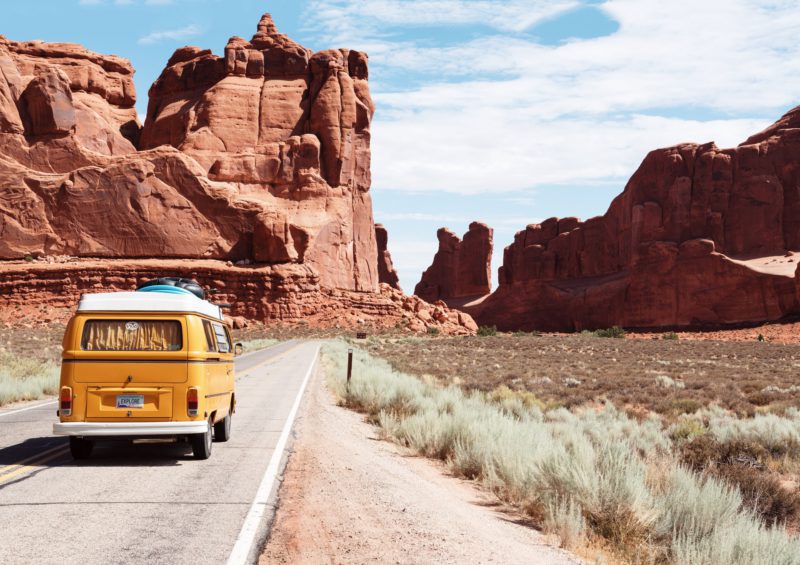There are a vast number of national park sites scattered across the United States of America home. 423 to be precise. Out of this impressive number, there is a special group of 63 sites among them. These are the special parks, designated with “National Park” as part of their proper names (you know the ones — Grand Canyon, Yellowstone, Yosemite, just to name a few). These are the sites that have been selected as especially important and many visitors across the country plan vacations around visiting these protected gems. If you’re craving a grand adventure, there’s really nothing like hopping from national park to national park! Here are five superb national park road trips you’ll love, each one delivering a different experience, from terrain to climate.
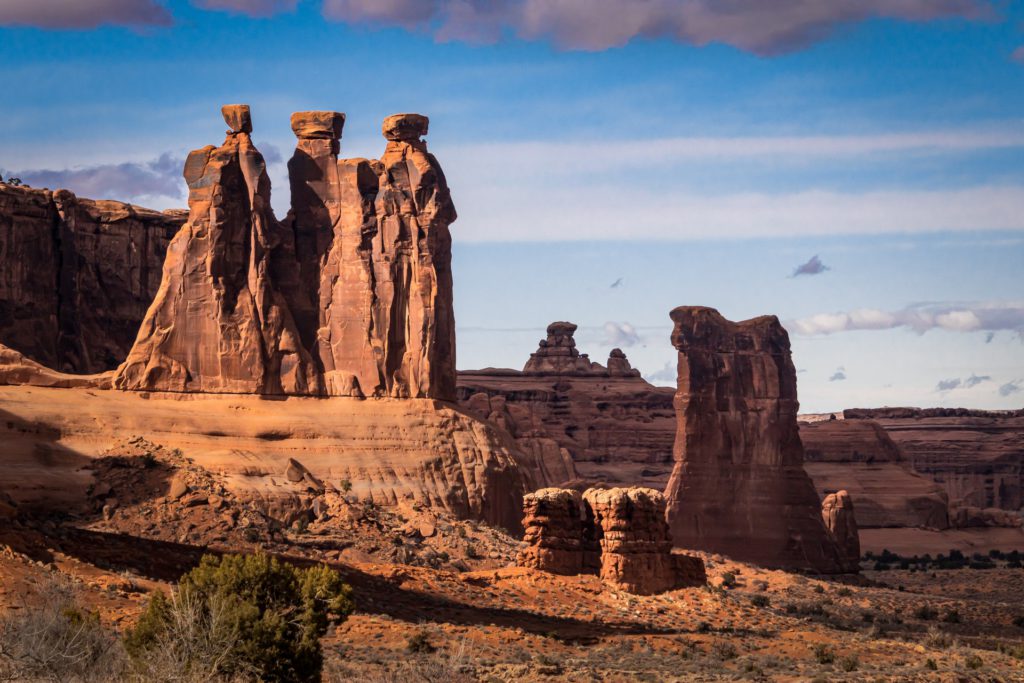
Ultimate Utah road trip: Arches National Park to Zion National Park
Arches National Park
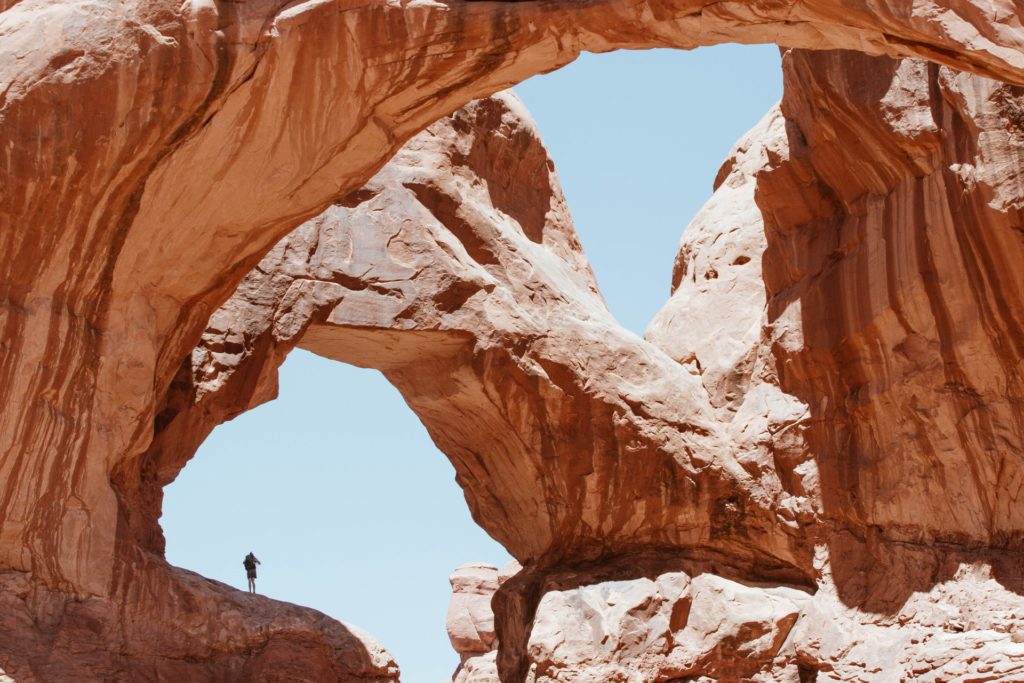
Why visit Arches National Park?
Arches National Park is a sprawling wonderland of rose-colored rock, claiming the highest density of sandstone arch formations on the planet. Across this vast landscape, you’ll find a stunning collection of over 2,000 such natural stone arches and countless other towers, pinnacles, spires, domes, and boulders, all teeming together to form an otherworldly vista. The best part? You can get a great view of these jaw-dropping formations as you drive across the paved roads of the park.
Now, if you want to check out the most iconic landmark in the park, it’ll have to be the 52-foot-tall freestanding Delicate Arch. Perfectly crafted by Mother Nature, this emblematic sandstone masterpiece has stood the test of time and remains one of the most famous natural arch formations in the world. To access the site, look for the Upper Delicate Arch Viewpoint, which will bring you right to the base of the arch following a short hike.
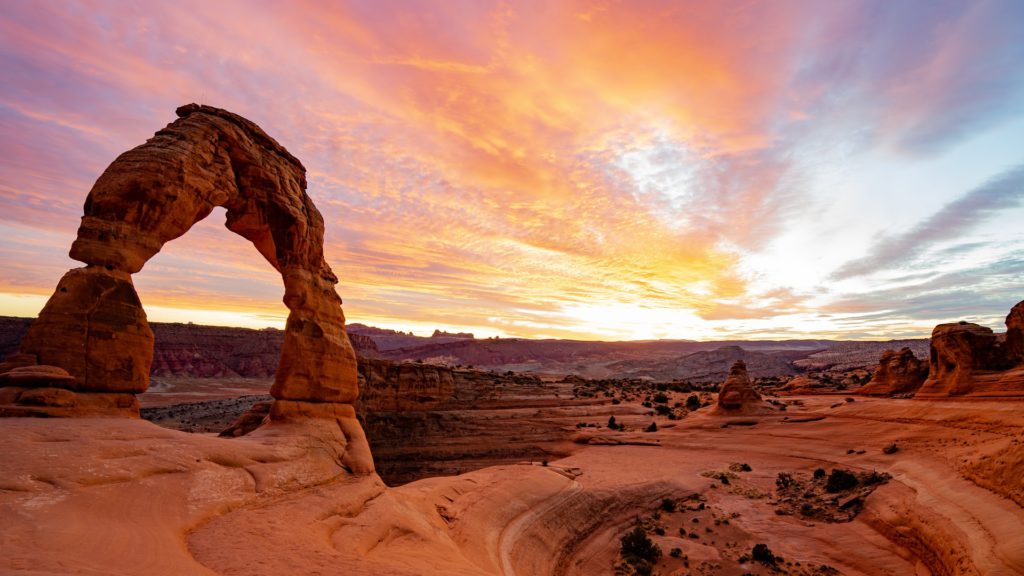
Getting to Arches National Park
Arches National Park is located in southeast Utah. The gateway to the park is the city of Moab on the Colorado Plateau, located just five miles south. If you plan to drive from Salt Lake City, the distance to travel is approximately 236 miles southeast — about four hours.
Canyonlands National Park
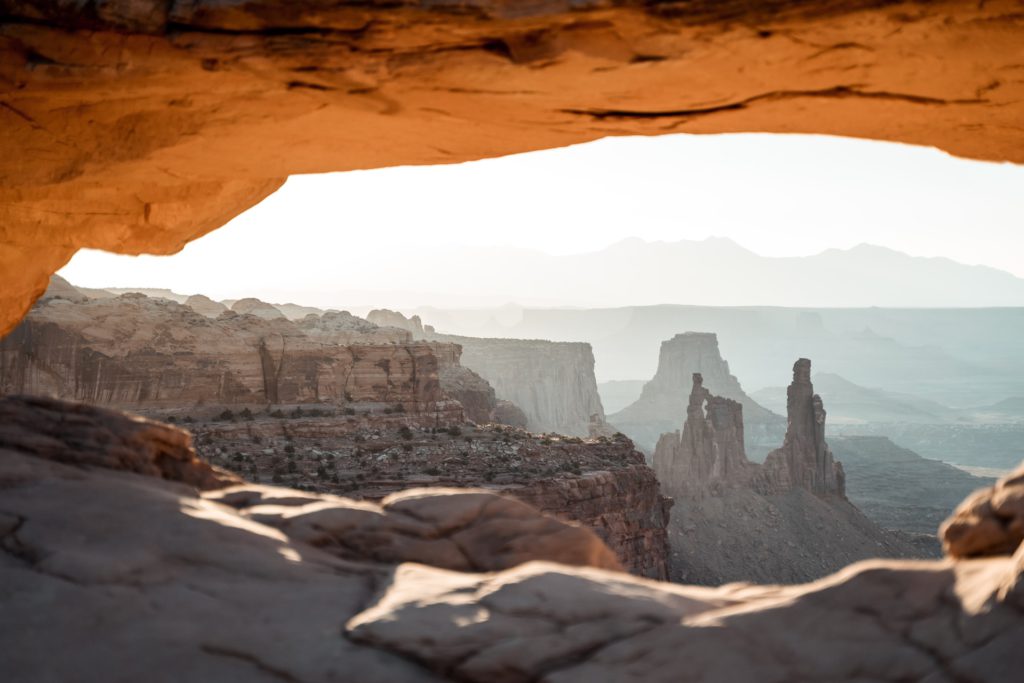
Why visit Canyonlands National Park?
While less popular than neighboring Arches National Park, Canyonlands National Park delivers just as much of that scenic red rock desert wilderness. The paved Island in the Sky scenic driving road is the most convenient way to explore the Canyonlands National Park — it winds a scenic 34 miles through the rocky landscape, providing panoramic views that stretch from the canyon bottom.
The one must-see site here is the epic Mesa Arch, located in the Island of the Sky district. Framing the La Sal Mountains and Utah’s White Rim country in a spectacular vista, this unique arch has drawn an army of photographers from near and far, each clamoring for that classic keyhole shot.
Getting to Canyonlands National Park
Canyonlands National Park is located just 30 minutes from Arches National Park. Travel southwest via UT-313 W and continue onto Grand View Point Road / Island in the Sky Road.
Capitol Reef National Park
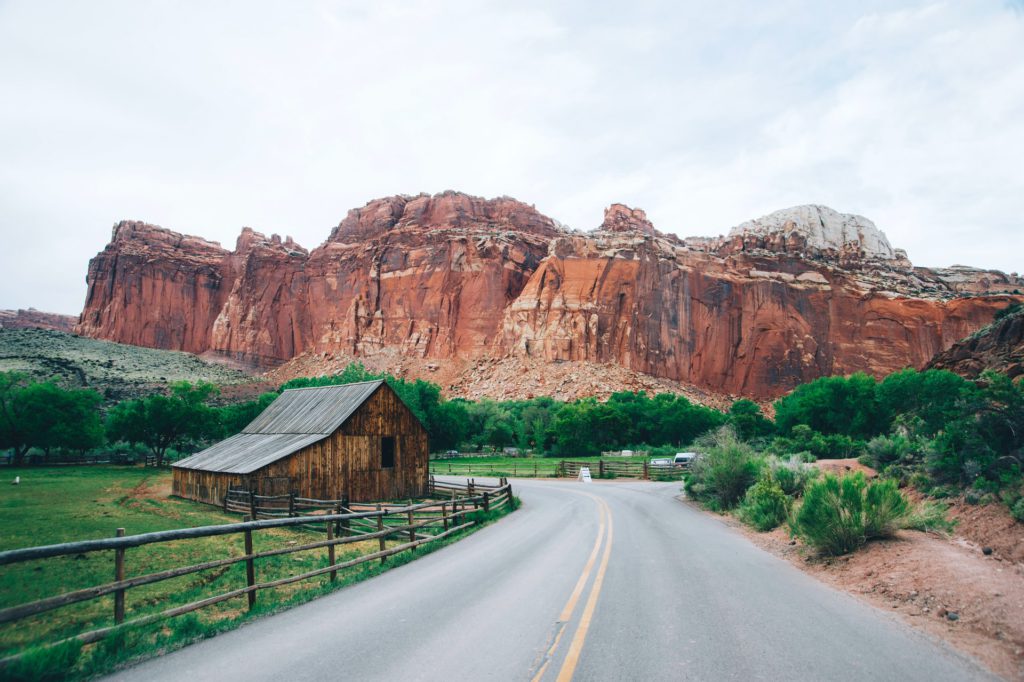
Why visit Capitol Reef National Park?
Capitol Reef National Park is, as most of Utah’s “Big Five” national parks are, overloaded with geological marvels. Brimming with unusual and beautiful formations in all sorts of warm colors and earthen textures, this is a playground of ridges, monoliths, canyons, and boundless backcountry ripe for exploration.
Speaking of ripe, the Fruita Rural Historic District section of the park features a paved scenic drive that starts near the visitor center and snakes through gorgeous rocky scenery, providing access to many established trails, important cultural and historic areas, and even peach, apple, and apricot orchards that flourish in the spring, summer, and fall!
Getting to Capitol Reef National Park
Capitol Reef National Park is about 145 miles west of Canyonlands National Park — just under a three-hour drive. From Canyonlands, take UT-313 E to US-191 N in Grand County, then follow US-191 N. Merge onto I-70 W, then take exit 149 for UT-24 W toward Hanksville. Stay on UT-24 W.
Bryce Canyon National Park
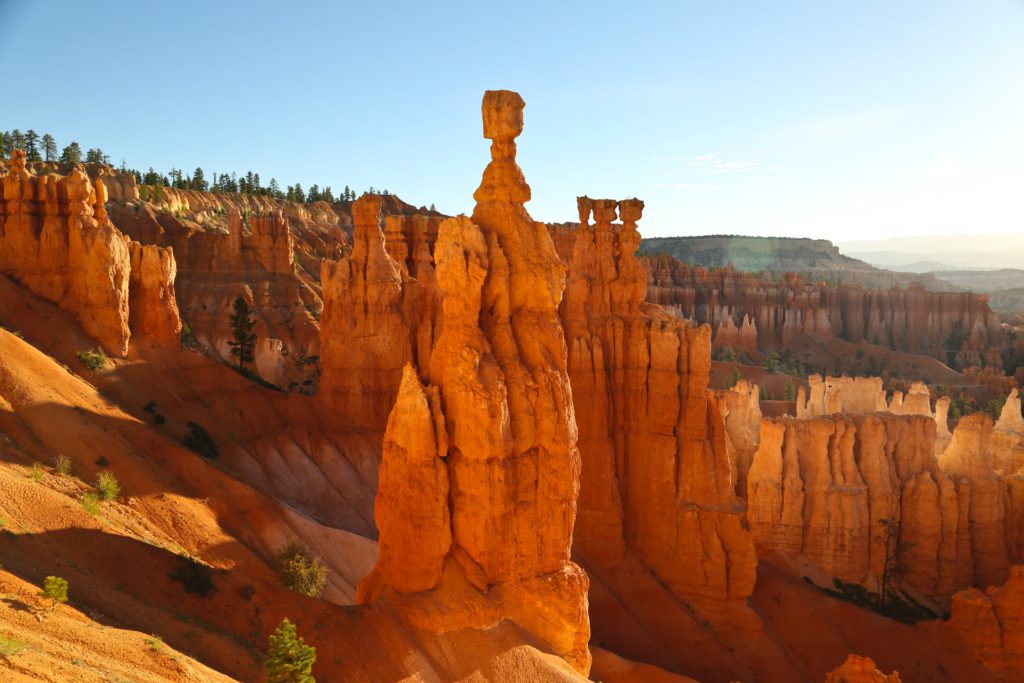
Why visit Bryce Canyon National Park?
Bryce Canyon National Park is where you’ll find the largest collection of hoodoo columns on Earth. These jagged pillars of rock have stood for millennia, carved by time through erosion caused by weather and gravity. Witness the almost alien-like terrain of the Bryce Amphitheater, the largest of the park’s 20 amphitheaters that stands out like a golden forest of vibrant stone. The landscape here is truly unique, even in comparison to the nearby Zion National Park and the rest of Utah’s Big Five.
Getting to Bryce Canyon National Park
Bryce Canyon National Park sits southwest of Capitol Reef National Park. Continuing west along UT-24 W, turn onto Browns Lane, then left onto UT-62 W. Follow for 26.3 miles and turn left onto UT-22 S. Turn right onto Johns Valley Road and follow the road for 35 miles. Follow signs for UT-63 S and stay on the road until you reach the visitor center. The journey covers 112 miles.
Zion National Park
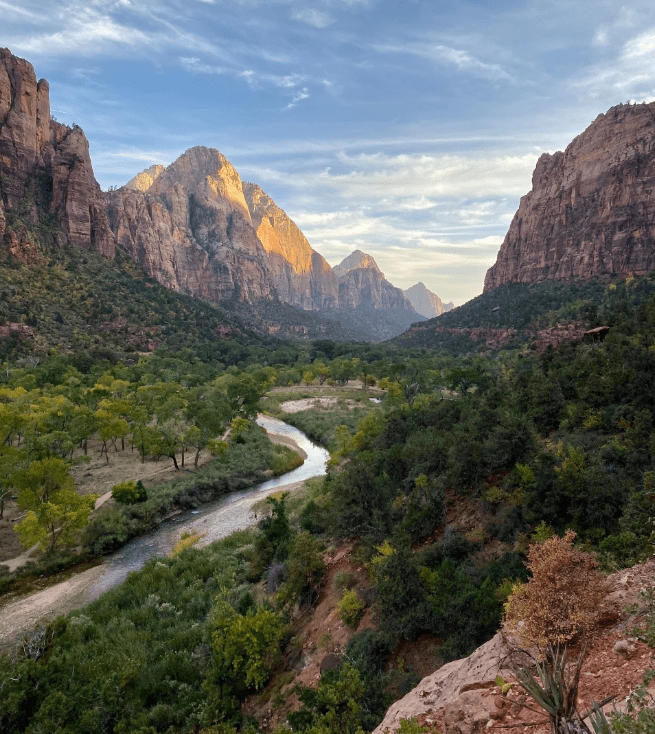
Why visit Zion National Park?
As the winding roads lead you into Zion National Park, you’ll definitely want to visit the Emerald Pools trails. Easily accessible, this is the perfect introduction to the park’s lush vegetation, mountain streams, and falls. Here, some hiking trails of varying difficulties provide a wonderful chance for exploration. Also, be on the lookout for wild turkeys — they’re seen all over the park and can grow to humongous sizes!
Getting to Zion National Park
Zion National Park is about 75 miles from Bryce Canyon National Park. Travel southwest on US-89 S all the way down until you reach UT-9 W. Follow UT-9 W until you can turn right onto Floor of the Valley Road / Zion Canyon Scenic Drive.
West Texas road trip: Guadalupe Mountains National Park to Big Bend National Park
Guadalupe Mountains National Park
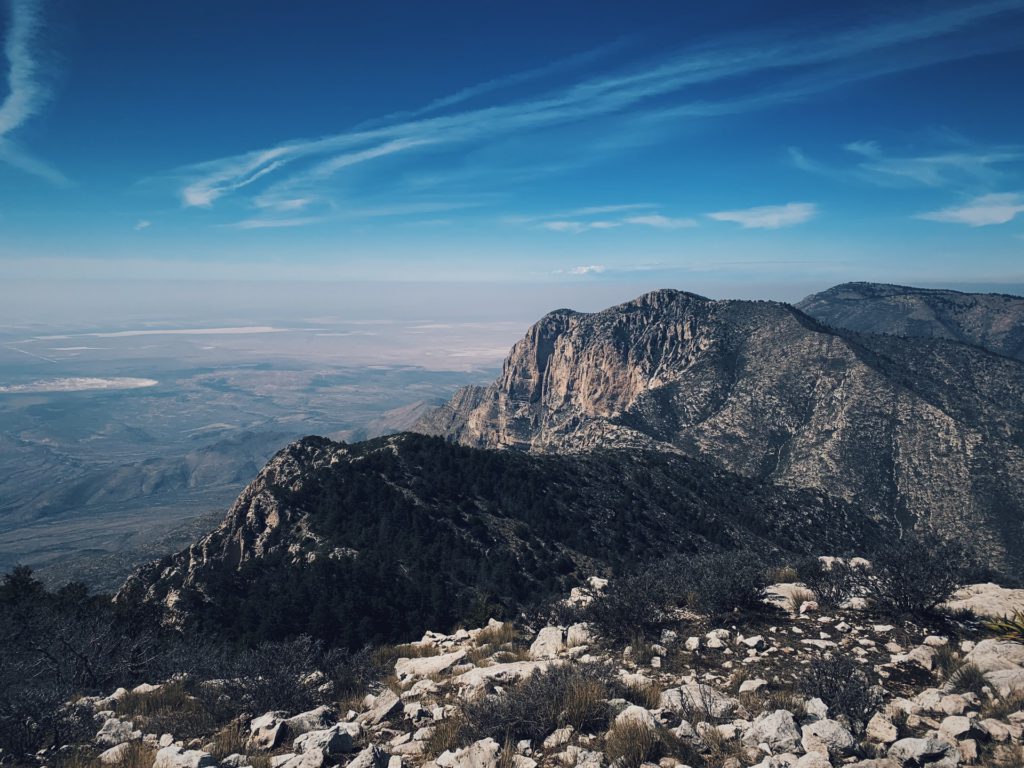
Why visit Guadalupe Mountains National Park?
If you’re looking for the highest peak in Texas — Guadalupe Peak, standing at 8,749 feet — you’ll find it in Guadalupe Mountains National Park. If you’re looking for the exposed remains of a 260-million-year-old fossilized reef system that existed when the area was once covered by the sea, this is also where to look! As one of the least visited national parks in the United States, you can explore the desert, canyons, and high mountains all in perfect solitude, without the crowds getting in the way.
Getting to Guadalupe Mountains National Park
Guadalupe Mountains National Park is located in Far West Texas. If you’re driving from Van Horn, head north on TX-54 and make a left turn at the junction of US-62 and US-180 to arrive at the park.
Big Bend National Park
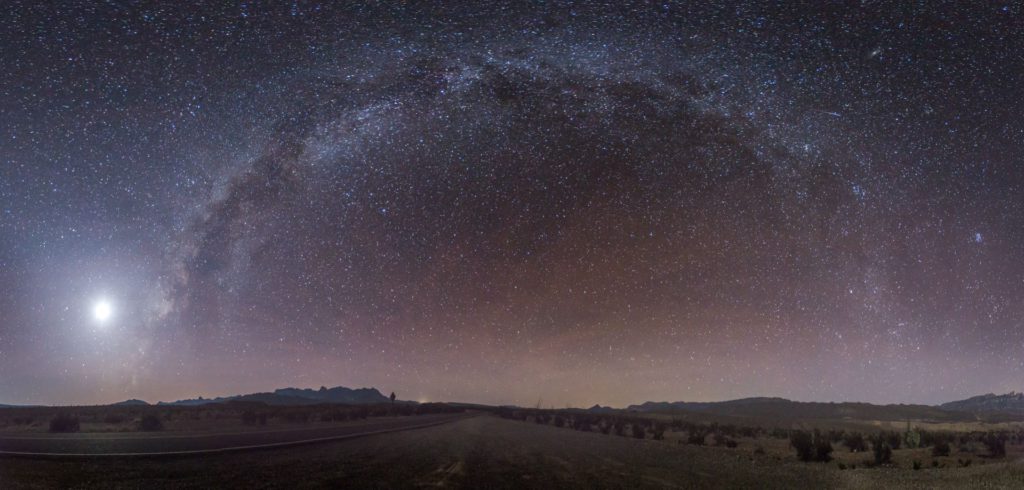
Why visit Big Bend National Park?
Big Bend is a huge national park with at least a hundred miles of paved scenic roads that weave through the Chihuahuan Desert. Close to the border of Mexico, it takes the cake as one of the most remote national parks in the country and has very little light pollution. This results in some of the darkest night skies imaginable and makes it a sanctuary for stargazers and astronomers. This unparalleled visibility has earned this off-the-beaten-path location the status of a Dark Sky Park, designated by the International Dark-Sky Association (IDA) in 2012.
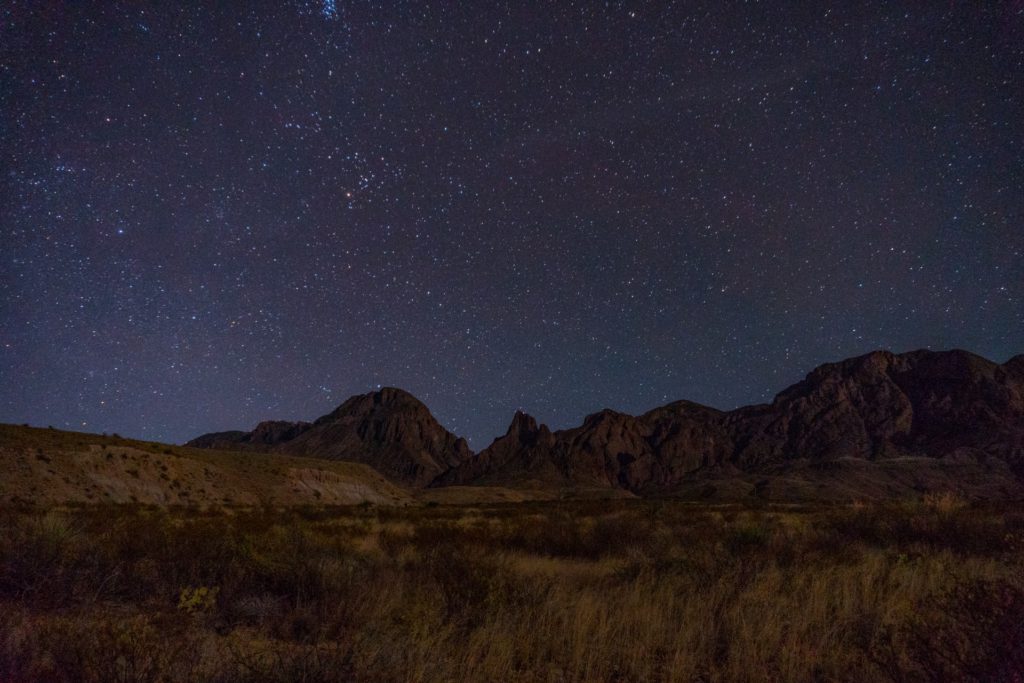
Getting to Big Bend National Park
Big Bend National Park is approximately 290 miles from Guadalupe Mountains National Park. Head back towards Van Horn and follow US-90 E to US-385 S in Marathon. From there, continue on US-385 S and take Main Park Road to Pine Canyon Road in Big Bend National Park.
Pacific Northwest road trip: Mount Rainier National Park to Olympic National Park
Mount Rainier National Park
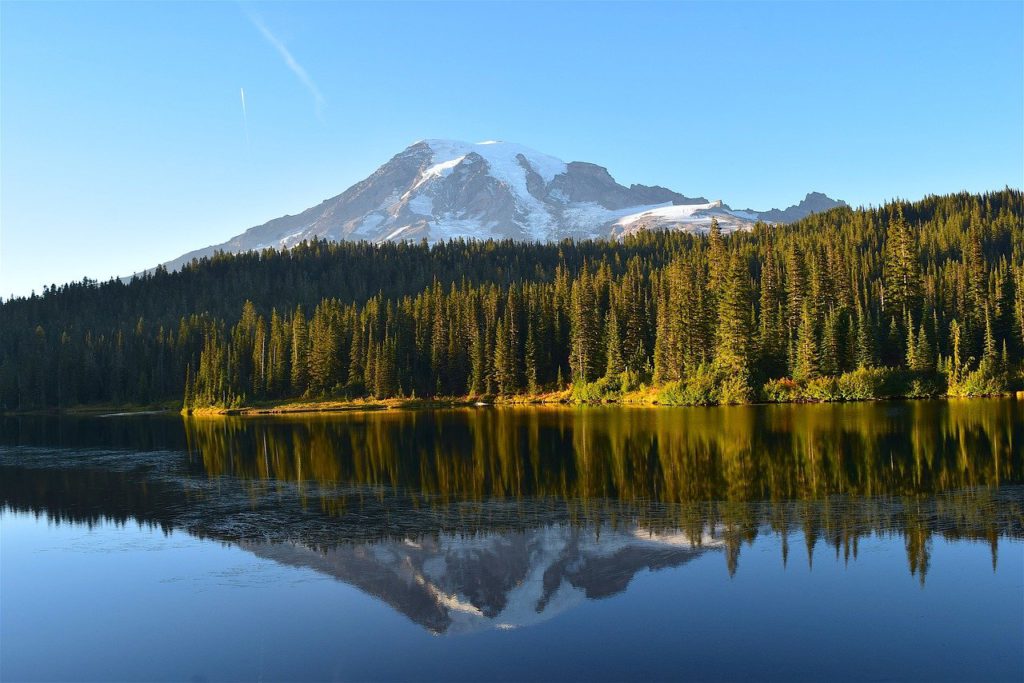
Why visit Mount Rainier National Park?
Mount Rainier National Park is home to the Mount Rainier stratovolcano, which stands 14,410 feet above sea level and can be seen in all its iconic glory from Reflection Lake. The extremely photogenic freshwater lake, which casts a perfect mirror image of Mount Rainier on clear days, draws almost two million people to the park every year. With plenty of campgrounds and hiking trails scattered throughout the park, it’s only natural you’ll want to spend a few days exploring this alpine wonderland.
Getting to Mount Rainier National Park
Mount Rainier National Park is located 80 miles southeast from Seattle — about a two-hour drive.
Olympic National Park
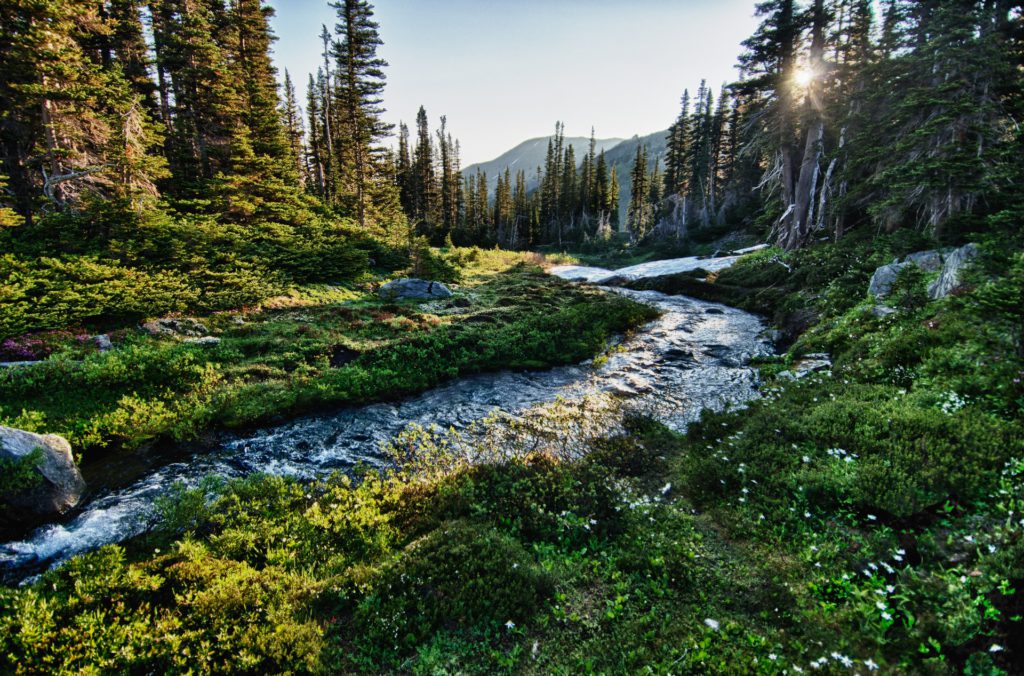
Why visit Olympic National Park?
Wild, pristine, diverse. Olympic National Park is one of the most unique national parks you’ll encounter, encompassing multiple ecosystems and climes within its boundaries, from alpine mountains to temperate old-growth rainforests to oceanic coastline. A whopping 95 percent of the park is designated wilderness, and you’ll find an amazing variety of creatures big and small here, including the likes of Roosevelt elk, cougars, black bears, coyotes and mountain goats on land, whales, dolphins, sea lions, and otters off the coastlines, over 35 native fish species in lakes and streams, and 600 species of birds!
Getting to Olympic National Park
The distance between Mount Rainier and Olympic National Park is approximately 116 miles. From Mount Rainier, head west to Olympia, take US-101 N to WA-119 N / North Lake Cushman Road in Hoodsport. Then, follow North Lake Cushman Road to NF-24 into the national park.
Northern California road trip: Lassen Volcanic National Park to Redwood National and State Parks
Lassen Volcanic National Park
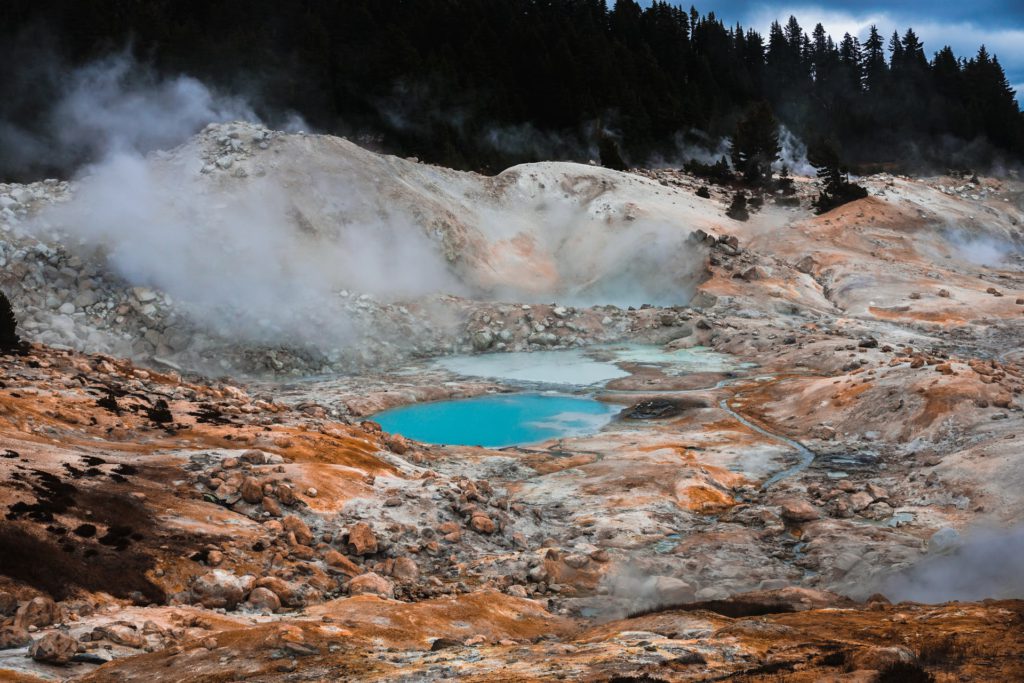
Why visit Lassen Volcanic National Park?
When it comes to impressive national park road trips, this Northern California adventure delivers a feast for the eyes. All four types of volcanoes found on our planet can be found right here in Lassen Volcanic National Park — shield, composite, cinder cone, and plug dome! Studding the fertile land across a sweeping 160,000 acres, you’ll find natural geothermal features such as fumaroles, mud pots, hot springs, geysers, and steam vents at odds with the park’s calm and tranquil atmosphere. The turbulent topography is a constant reminder of the region’s dramatic past, when an eruption in 1915 devastated the surrounding areas and altered the landscape forever.
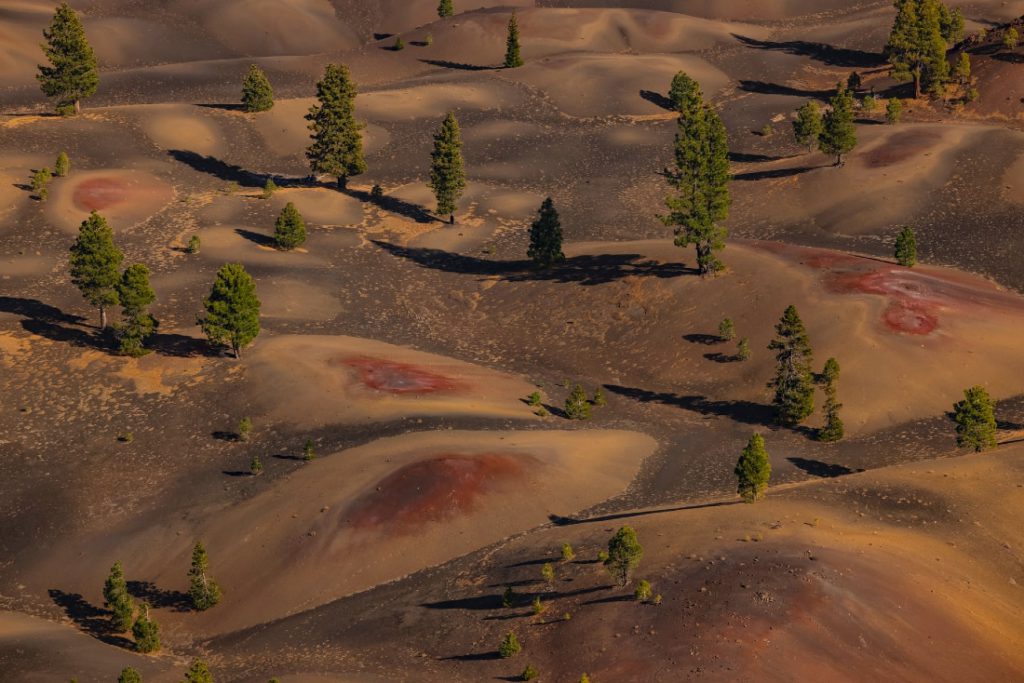
Getting to Lassen Volcanic National Park
Lassen Volcanic National Park is situated in northern California, approximately 160 miles northeast of Sacramento. It will take you about three hours to get there from the city.
Redwood National and State Parks
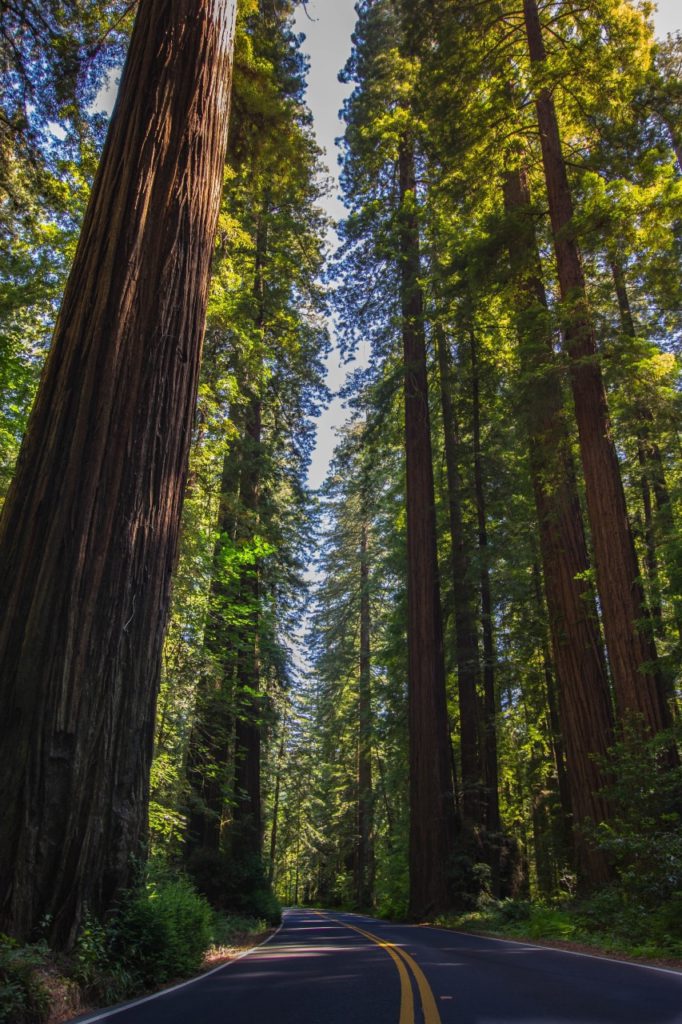
Why visit the Redwood National and State Parks?
On the California coast, just south of the Oregon border, there exists a place where the tallest trees on Earth stand. The Redwood National and State Parks are named for these majestic coastal redwoods that thrive in the area. Reaching up to 379 feet in height, with an average age of 500 – 800 years old (although the oldest trees can be 2,000!), these imposing trees are a sight to behold as you make your way through the Newton B. Drury Scenic Drive. As you explore this captivating woodland system, you’ll come across campgrounds, accessible forest trails, wildlife skittering through the lush undergrowth, peaceful meadows scattered with elk deer, and never-ending expansive views.
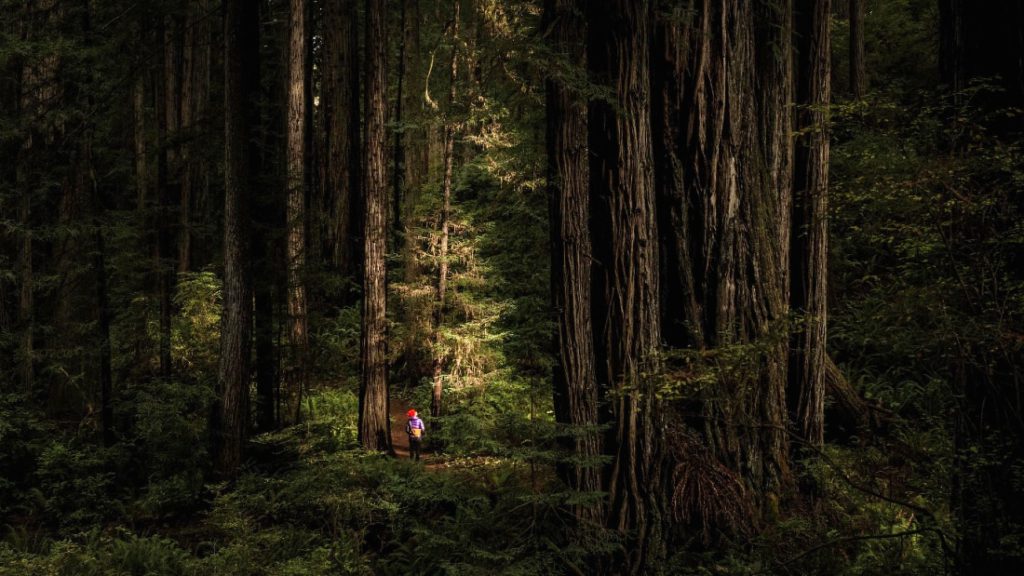
Getting to the Redwood National and State Parks
From Lassen Volcanic National Park, travel 180 miles west. Take CA-44 W and CA-299 W to Loop Road / Pine Creek Road in Hoopa, then follow Pine Creek Road to Bald Hills Road leading into the park.
East Coast road trip: Shenandoah National Park to Great Smoky Mountains National Park
Shenandoah National Park
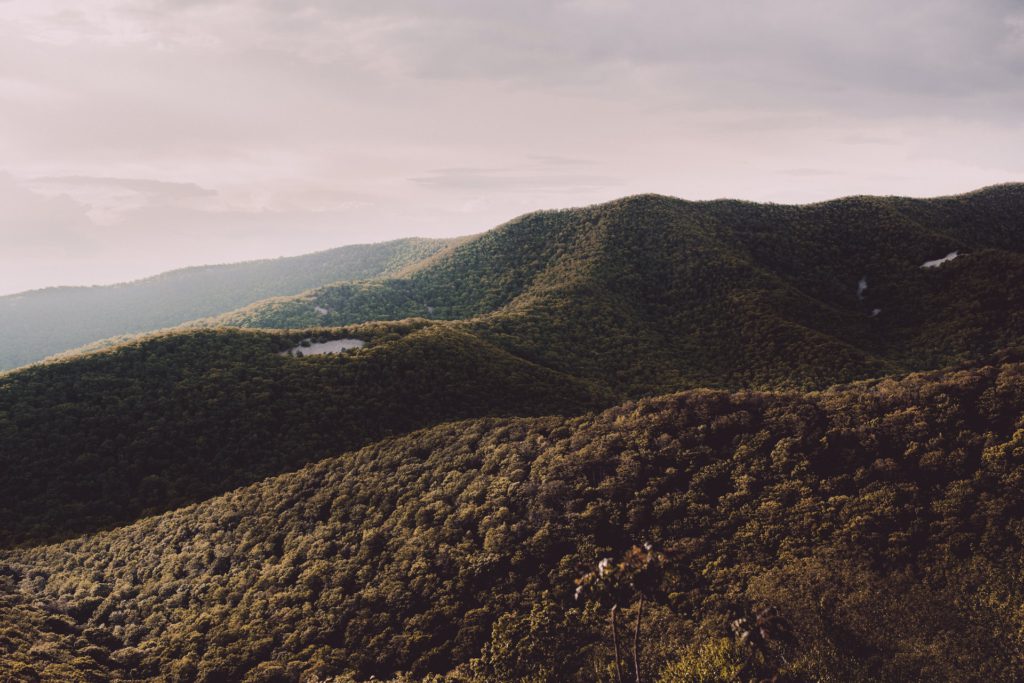
Why visit Shenandoah National Park?
Shenandoah National Park is rife with beauty. Its most accessible scenic byway — the 105-mile Skyline Drive — is one of the most gorgeous drives in the country at any time of the year. Passing through Virginia’s Blue Ridge Mountains, the road offers no less than 75 panoramic overlooks for visitors to take in the majestic Shenandoah wilderness. Make stops along the way to find trailheads that take you into the forests — a good idea during fall, when the foilage of the trees are at their autumn best.
Getting to Shenandoah National Park
Shenandoah National Park is located in the Blue Ridge Mountains, west of Washington, D.C. If you’re driving from Washington, D.C.’s metropolitan area, travel west on I-66 to Front Royal, Virginia, then exit to Route 340 South, and follow the signs for Shenandoah National Park and Skyline Drive.
Great Smoky Mountains National Park
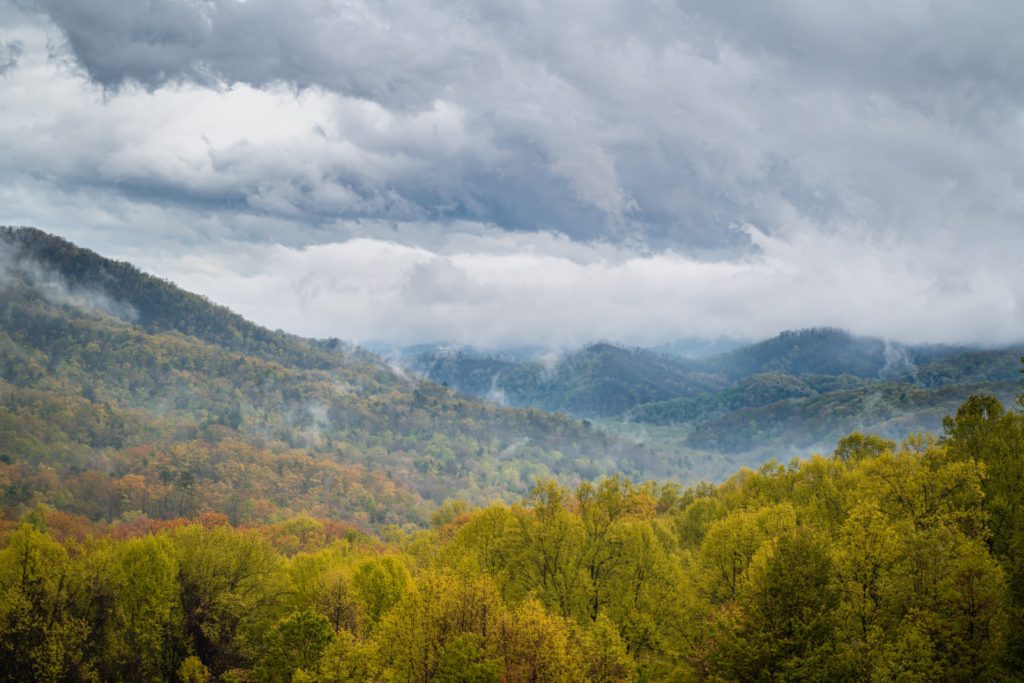
Why visit Great Smoky Mountains National Park?
Great Smoky Mountains National Park is perched on the border between Tennessee and North Carolina. Its impeccable landscape of sprawling lush forests encompasses blooming wildflowers, roaming wildlife, cascading waterfalls, and over a hundred superb trails covering 800 miles of pristine backcountry. Your trip to the Smokies takes you along the fully-paved 31-mile stretch of the Newfound Gap Road, which traverses between the Sugarlands Visitor Center near Gatlinburg, up over the mountains, and into Cherokee, North Carolina. Along the way, you’ll climb some 3,000 feet into the mountainous landscape and travel through beautiful woodlands featuring evergreen spruce, pine-oak, and cove hardwoods. Talk about a dreamy excursion!
Getting to Great Smoky Mountains National Park
Shenandoah National Park’s Skyline Drive joins the Blue Ridge Parkway, which runs 469 miles through 29 Virginia and North Carolina counties, linking Shenandoah National Park to Great Smoky Mountains National Park. The Parkway is an unforgettable scenic experience in itself and is dubbed “America’s Favourite Drive”.
You’re probably more than ready to pick an adventure from this list of epic national park road trips now. Remember to check the US National Park Service website for news, updates, and park opening statuses to plan a safe and enjoyable trip. Looking for more adventure? Read our article on the best national parks in Sri Lanka for the best wildlife encounters!
About TourHero
TourHero is a social travel platform that enables you to travel with like-minded people and fall in love with the journey. We work closely with handpicked local operators to ensure every experience curated is unique and exclusive to your travel group. Come with us on epic adventures and create memories that last a lifetime. Get started here!
